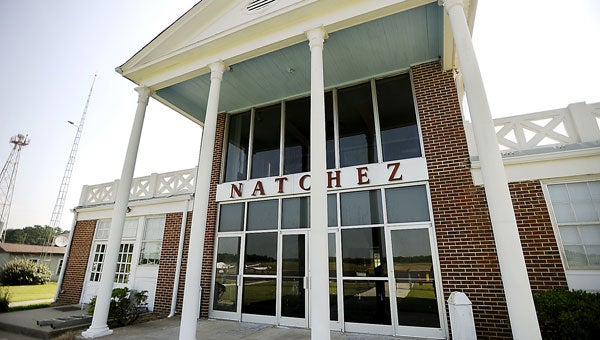Timber ready to explode with new industries
Published 12:13 am Sunday, July 7, 2013
In Mississippi — and especially southwest Mississippi — timber is a growth industry.
Last week, KiOR — the alternative fuels company with plans to build a cellulostic fuel production facility using pine as feedstock near Adams County’s port — announced it had begun continuous production in its Columbus facility and company officials said they anticipate a late 2013 or early 2014 groundbreaking in Natchez.
The plans for the Adams County facility call for more than a million tons of timber annually, and Natchez Inc. Executive Director Chandler Russ said that wood is planned to be sourced from the local and regional woodbasket.
“It means it has the potential to be an extremely large opportunity for all of the forestry community in our general area, from the log to the logger to procurement — all the way through,” Russ said. “I know that KiOR is currently working with and has been in some discussions already with area timber people starting to procure (wood).”
That companies looking to use timber as a source product would locate in Mississippi is no surprise. With approximately 19.5 million acres of timberland, 65 percent of Mississippi is covered with forests. When considering the availability of timberland in the state, the Mississippi Development Authority’s Jeff Rent said the state has been “blessed.”
“This timberland is both available and capable of providing the volumes needed to support the growing needs for industrial uses, like that of KiOR,” Rent said. “As our economy continues to show signs of rebounding, we see this as an opportunity to grow the agri-business target sector in Mississippi.”
In the case of southwest Mississippi, the potential for growth in the forestry sector has been hampered by the loss of industry for the last decade, Adams County Forestry Association President Jack Stephens said.
“Since International Paper closed, we have not tapped virtually any of the timber resource of southwest Mississippi — it has been grown and has not been touched for 10 years,” he said. “The timber industry is just going to have to explode in the next 2-3 years to meet the demand.”
In the 10 years since IP closed the Natchez plant, the forest has grown 10 percent, Russ said.
“KiOR is looking for trees that are a little different than what IP was using, but IP was using roughly 2 to 2.4 million tons of wood annually, and it was being sourced locally,” he said. “At the same time, you have got two regional idle Georgia-Pacific mills in that scheme of things that were probably consuming a combined half million tons also. So nearly 3 million tons that was previously being consumed out of the wood basket is no longer being consumed, and the growth of the forest demonstrates a great need to maintain that level of cutting. It is a renewable crop, and it needs to have a market. KiOR is one of those that is prepared to provide that market.”
The Drax Biomass wood pellet plant planned for operation in Gloster — it was announced in December — should consume approximately 500,000 tons of wood annually.
Even if KiOR and Drax consume as much as their highest projections, the forest won’t be in any danger of depletion, Russ said.
“Between the two of them, it is not even coming to what IP was consuming, to put it all in perspective,” he said.
But bringing the local forests back up to that level of production after being virtually untouched for years will still have huge effects for local producers and will ripple across the economy, Stephens said.
“This is going to require more log trucks, more drivers, more diesel, more bulldozers and log skidders — all the things you need for a logging production,” he said. “KiOR may create a few hundred jobs, but I think you are going to have terrific secondary employment coming off of this.”
But for the local forests to stay competitive, Stephens said the forestry association is encouraging local growers to pursue certification through the American Tree Farm system.
KiOR requires that its feedstock meet the qualifications for production of cellulostic fuel under the Environmental Protection Agency’s Renewable Fuel Standard 2, and Stephens said Drax likewise requires a certification for its source wood.
The American Tree Farm system is one of the cheapest ways local landowners can get a third party certification that will likely meet the demands of companies looking to ensure their wood is sourced from renewable practices, Stephens said.
“The American Tree Farm System requires you to have a management plan, that you adhere to the plan, that you are inspected regularly and that you are a tree farm,” Stephens said.
“You need to manage it with a plan to thin (trees) on a proper schedule, something that good management and good practices would dictate anyway.”
With approximately two years’ lead time before the new companies fire up their factories, Stephens said the forestry association is looking to get adjacent counties to participate in the program as well. A forestry certification meeting for those interested in the tree farm system was hosted in Adams County in April, and more meetings are planned for the fall.
“Even if (these companies don’t) require it, it makes good business sense to manage your resource in a responsible way so that you have trees and therefore income spread out in perpetuity,” Stephens said.






